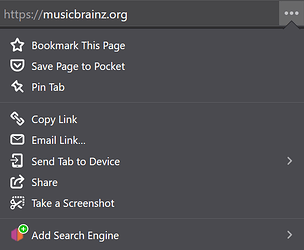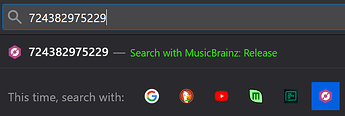It is a pity you don’t have any decent second hand stores in Vienna. If you did you’d realise that there is a grading system and a second hand disc - CD or Vinyl - can be as good as new. Just comes down to people being careful. Most of the CDs I have bought from EBay are as good as new.
Yay! The more you add, the more mistakes you correct, the better you get.
This is your Training. Throw in a release, let us give it a kicking, and if you survive that barrage you are ready for the next one. I know I made all kinds of weird mistakes on my first Releases because my “common sense” didn’t always follow the guidelines. After a few disks I started to see those daft little differences in the artwork, matrix, hub, etc…
I’ve seen some people add their discIDs to the annotations. At least whack it into the edit notes.
Trouble is that it is possible for a discID to be on more than one Release making it really hard to know for sure where the error is.
I have a head start on you all. “I’ve been mad for f**king years – absolutely years” (bonsus points for naming source of the quote…) 
I also want a microscope for IFPI as my scanner never gets them lit correctly. Have sometimes needs a to use my camera phone instead to get shadows \ lighting at a different angle.
I like @jesus2099 logic of making a Good Fresh Release. This should lean weight on to getting the accurate Releases into place. Eventually the release with dozens of discIDs will stand out as a lone mess and easier to remove.
I think “The Powers That Be” have already realised we are learning more here by rambling on tangents. (Lol - was that intentionally a Roger Waters quote?  ) This is a Voyage of Discovery learning the parts that are important of adding a Release. It would not make sense splitting out the discID parts…
) This is a Voyage of Discovery learning the parts that are important of adding a Release. It would not make sense splitting out the discID parts…
Ahhh - innocence… IFPI is another Rabbit Hole of details, but needs a pesky magnifying glass to read. I tend to add matrix \ hub scans especially on those releases with loads of versions. For bands with less reissues I’ll often not bother.
This is why that REM Mumors drove me around in circles… (I have about six page of notes for that one CD - but I learnt LOADS about how disks are made)
List of IFPI codes: List of SID codes - Redump Wiki
A Pink Floyd specific page, but very interesting and a quick summary of how EMI did things Pink Floyd Archives-U.K. CD Discography
Handy to scroll around that page as you start to see how often the “same” disc is actually subtly different to another. And how a “GB (SWNDON) Release” or a “Dutch UDEN CD” is also a European release.
That site is good for a focused understanding of some of this from the viewpoint of just one artist.
Random threads on where some of this stuff come from talking about Glass Masters and versions and little scratches in the hub for some other manufacturers: https://www.forums.stevehoffman.tv/threads/mastered-by-nimbus-cds-question.115143/ CDs Pressed by Specialty: SRC code? | Steve Hoffman Music Forums
You may need to open a beer or three and have a spare evening for reading through some of them threads… but to me I find this stuff fascinating.
You can see why it is impossible to learn all this stuff on your first entry at MB. You have to start simple… and then work upwards with your detail levels. You were kinda lucky by starting with those Peter Gabriel concert disks as they are unique and fairly easy to nail down specific details.
You can click on your DiscID and find a link to Set Track Durations. DiscIDs should always overwrite the manual and make those times not editable in the Tracklist GUI. This is also possible when you find one of those Releases with a dozen discs attached - you can set yours as the one that sets the times.
BUT this is why I know there are releases here which do have very different length CDs on the same Release. I’ve set the times based on my CD, only for someone else to come along and hit the button on another CD, changing those times. This is why I personally have never deleted a DiscID. “If in doubt, leave it out in”.
![]()
![]()





